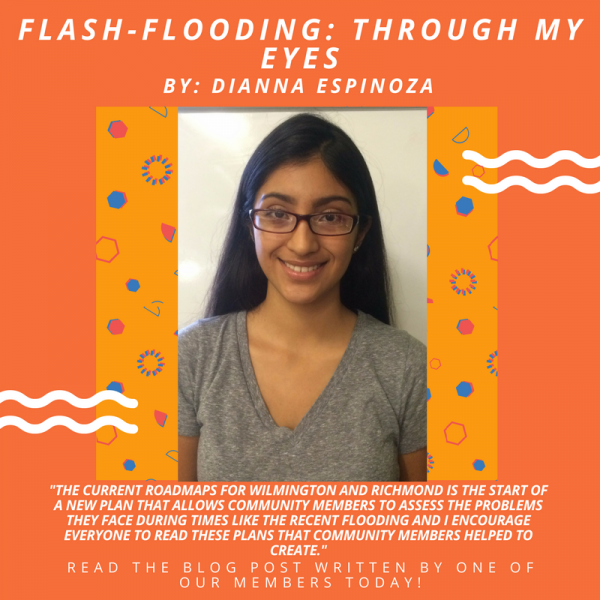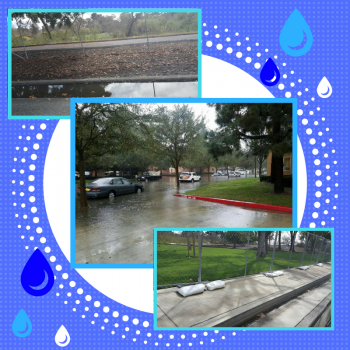
With the recent rain, everyone in our communities can see how unprepared our community is for the impacts of flooding. I realized this when I was taking my driver’s test. The day of my test was on a day when it was raining heavily; I realized how unprepared I was as a first time driver and how a lot of people are unprepared. I didn’t know how to use my defrosters; I had to determine what the safest speed limit was; and prepare myself if I was to hydroplane or encounter an accident.
As Southern California experienced a lot of rain in the following days, I was able to see how community members reacted to the flash flooding our community always experiences during heavy rain. I was able to see this first hand since I was in the car when my Mom was driving through Wilmington and Carson. I remember seeing lanes in the road being flooded with water and other drivers either driving through it very slowly because they didn’t want to get stuck or merge onto the only lane not flooded with water. I saw parked cars being flooded in murky water that had been collecting debris. I even remember seeing a worker of a mom and pop shop placing sandbags in a doorway to prevent flooding, while other shops had been too late to react.
For a refinery town like Wilmington, I along with community members, and refinery workers could only pray nothing happened to the surrounding refineries and the other industrial land uses and hazardous sites that could result in runoff of hazardous materials to possibly contaminate the water flowing through our community. With the launch of the Roadmaps to Resilience I have many hopes that it can help our community in times of vulnerability like the flash flooding we’ve already experienced. The roadmaps already have a map that identifies hazardous facilities and sea-level rise and also highlights issues and possible solutions to problems we currently face. However, I hope that the Roadmap can continue to be developed to identify plans like what to do to be prepared in case of flash flooding, locating safe spaces that aren’t as susceptible to flooding, where to access tools like sandbags and other equipment to avoid water damage, and how to prepare a plan with family or neighbors to safely evacuate an area where water has been contaminated. I hope that the Roadmap can continue to be something that community members help make, thanks to workshops held that allow community members to voice their struggles and hopes for their community. The current Roadmaps for Wilmington and Richmond is the start of a new plan that allows community members to assess the problems they face during times like the recent flooding and I encourage everyone to read these plans that community members helped to create.
The Full Roadmap to Resilience will be released soon. Access the Executive Summaries for Wilmington and Richmond below.
Wilmington and Richmond




